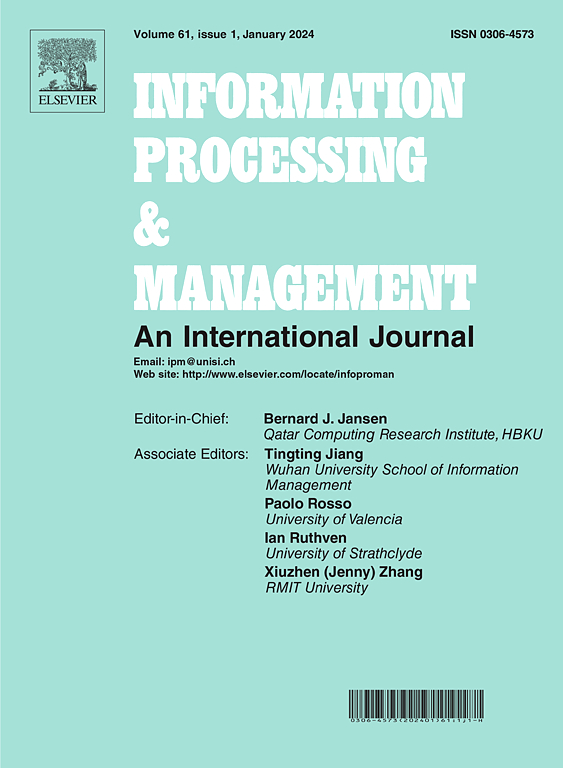有序失焦:一种相对时尚的排序学习方法
IF 7.4
1区 管理学
Q1 COMPUTER SCIENCE, INFORMATION SYSTEMS
引用次数: 0
摘要
现有的时尚推荐通常依赖于自然语言处理或基于内容的图像检索,忽略了对时尚图像的直接审美评估。考虑到这项任务的主观性和复杂性,我们建议将时尚度作为对配对服装图像进行排序的相对属性。为了解决这一排序挑战,我们提出了Ordinal Focal Loss,将两两排序问题转化为一个多分类任务,利用序数属性来改进分类边界。此外,在时尚特征表征方面,我们建议不仅要对单个单品进行建模,还要对它们作为一套服装的组合效果进行建模,从而提供更全面、更细致的时尚表征。我们引入了Fashionability3k数据集,包含3k对图像(2398对有序和601对相似),具有客观的相对时尚标签。在三个数据集(我们的Fashionability3k和两个公共数据集)上的实验表明,我们的方法在排名精度上比基线高出近1%。在用户研究中,它与人类主观感知的一致性达到了0.72。此外,结合局部和全局视觉特征可以带来额外的性能提升,在有序对中平均提升2.78%,在相似对中平均提升1.09%。这是第一个将时尚作为客观属性进行比较分析的研究,并通过大量的实验进行了验证。本文章由计算机程序翻译,如有差异,请以英文原文为准。
Ordinal focal loss: A relative fashionability ranking learning method
Existing fashion recommendations often rely on natural language processing or content-based image retrieval, overlooking direct aesthetic assessments of fashion images. Given the subjectivity and complexity of this task, we propose treating fashionability as a relative attribute to rank paired clothing images. To address this ranking challenge, we propose Ordinal Focal Loss, which transforms the pairwise ranking problem into a multi-classification task, leveraging ordinal attributes to improve classification boundaries. Furthermore, in terms of fashion feature representation, we propose modeling not just individual items but also their combined effect as an outfit, providing a more holistic and nuanced fashion representation. We introduce the Fashionability3k dataset, comprising 3k image pairs (2398 ordered and 601 similar pairs) with objective relative fashion labels. Experiments on three datasets—our Fashionability3k and two public datasets—show that our method outperforms the baseline by nearly 1 % in ranking accuracy. In the user study, it achieved a 0.72 consistency with human subjective perception. Moreover, combining local and global visual features leads to additional performance gains, with an average improvement of 2.78 % in ordered pairs and 1.09 % in similar pairs. This is the first study to treat fashionability as an objective attribute for comparative analysis, validated through extensive experiments.
求助全文
通过发布文献求助,成功后即可免费获取论文全文。
去求助
来源期刊

Information Processing & Management
工程技术-计算机:信息系统
CiteScore
17.00
自引率
11.60%
发文量
276
审稿时长
39 days
期刊介绍:
Information Processing and Management is dedicated to publishing cutting-edge original research at the convergence of computing and information science. Our scope encompasses theory, methods, and applications across various domains, including advertising, business, health, information science, information technology marketing, and social computing.
We aim to cater to the interests of both primary researchers and practitioners by offering an effective platform for the timely dissemination of advanced and topical issues in this interdisciplinary field. The journal places particular emphasis on original research articles, research survey articles, research method articles, and articles addressing critical applications of research. Join us in advancing knowledge and innovation at the intersection of computing and information science.
 求助内容:
求助内容: 应助结果提醒方式:
应助结果提醒方式:


